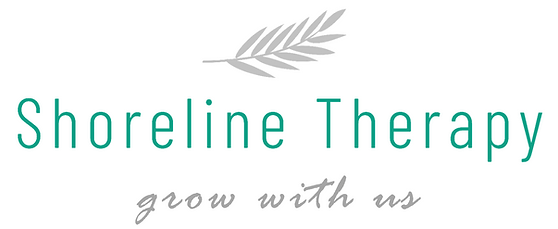
Speech Sound Development
Speech Sound Delays and Disorders
‘Speech sound delay’ or ‘speech sound disorder’ (SSD) are umbrella terms for a number of speech difficulties that children may have. A ‘delay’ is used to describe speech sound difficulties that still follow the normal developmental pattern, but that are immature for a child’s chronological age. A ‘disorder’ describes difficulties that are not considered ‘normal’ at any stage of development. SSDs are further divided into the following categories:
-
Articulation delay (e.g., difficulty saying /r/ after age 7)
-
Articulation disorder (e.g., lateral lisp at any age)
-
Phonological delay (example of a type of error: if a child says ‘tape’ instead of ‘cape’ after age 3 ½ years)
-
Phonological disorder (example of a type of error: if a child says ‘cape’ instead of ‘tape’)
-
Speech sound disorders with an organic or structural cause (e.g., cleft lip/palate)
-
Speech sound patterns associated with significant hearing impairment
-
Motor speech disorders (e.g., developmental dysarthria or childhood apraxia of speech)
For more information:
Assessment
A speech-language pathologist is able to evaluate and diagnose SSDs and answer the following questions:
-
What is the nature of the child’s speech difficulties? (e.g., is the child’s lisp a dentalized, interdental, unilateral, bilateral, or palatal lisp?)
-
Is this child’s speech errors normal for his/her age or are they consistent with a delay/disorder? (e.g., if a child cannot yet say ‘r’ is that normal for their age?)
-
What type of speech sound delay/disorder is the child exhibiting? (this is critical to the type of treatment procedure selected)
-
How severe is the delay/disorder?
-
What is the child’s prognosis for improvement with intervention?
-
What therapeutic approach and procedures are appropriate to treat the delay/disorder? (e.g., there are different procedures for articulation, phonological, and motor speech difficulties)
Assessment typically involves:
-
Interview with parents and collection of case history
-
Hearing screening
-
Expressive and receptive language screening
-
Examination of the oral cavity
-
Standardized assessment of speech sound productions (compares an individual child's performance to other children their age)
-
Analysis of samples of natural speech and responses from standardized assessment
-
Probe for response to treatment strategies
Intervention
Children do not ‘grow out of’ either delays or disorders of speech. Specialized intervention by a speech-language pathologist is required if a child is to improve their speech. The earlier a child is seen, the better. An evaluation will give a child’s parents accurate information specific to their child so that they can make informed decisions.
Typical Speech Sound Development
Normative data charts on speech sound acquisition can sometimes appear to be different. The data is actually generally similar but may appear to be different based on how the data is reported. For example, a chart may indicate the age when a sound starts to emerge (i.e., the child sometimes says the sound accurately) and/or mastered (the child says the sound accurately over 90% of the time). Mastery can also be defined as anywhere between 80-90% correct or 80-90% of a given group of children. Furthermore, sounds are developed at different ages depending on the position in the word (e.g., at the beginning, middle, or end of the word).
These sound development charts are meant to provide guidance for referrals and for parent counselling. Interpretations about whether or not a child’s errors are age-appropriate or developmental should only be made following consultation with a speech-language pathologist, and usually after a comprehensive clinical evaluation using norm-referenced standardized assessments, speech sample analysis, and other valid and reliable clinical tools and procedures. Although these guides are helpful, that they are indeed just that – guides – and that they have limitations and do not replace a clinical evaluation.
This handout describes the very early (birth to 2 years) development of speech.
Speech Sound Development: A Guide for Parents
This chart displays the ages when specific speech sounds are developed.
Phonological Process Chart from Mommy Speech Therapy
When to Refer to Speech-Language Pathology
A speech-language pathology referral is warranted when:
-
A parent, education or health professional has concerns about a child’s speech development, particularly if there is a family history, hearing impairment, history of chronic ear infections, or the child is experiencing frustration. If a parent is concerned, an evaluation will either affirm that their child’s speech development is age appropriate (while giving them accurate, individualized information), identify if a child is at risk and should be monitored (while also providing the parents with recommendations to facilitate further speech development), or identify a child that is genuinely in need of intervention. If there is hesitation about whether or not a referral for a full assessment is warranted, a parent can start with a brief screening test.
-
If, using the guides for speech development, a child does not appear to be reaching milestones.
-
If a child exhibits any of the following (we've included these specific signs as they are commonly misinterpreted by others):
-
lateral lisps – s, z, sh sounds slushy or spitty
-
palatal lisps – midline of tongue touches roof of mouth too far back
-
backing – a sound made at the front of the mouth is replaced by a sound made at the back of the mouth (tape >> cape; Dan >> gan)
-
initial consonant deletion – the first consonant in a sound is omitted (two >> oo)
-
-
If, using the guidelines below, a child is less intelligible than would be expected for their age to an unfamiliar person. People familiar with a child (especially their parents) will understand more of what their child says than someone who is relatively unfamiliar with the child.
19-24 months 25-50% of the child’s speech is understood
2-3 years 50-75%
4-5 years 75-90%
5+ years 90-100%
